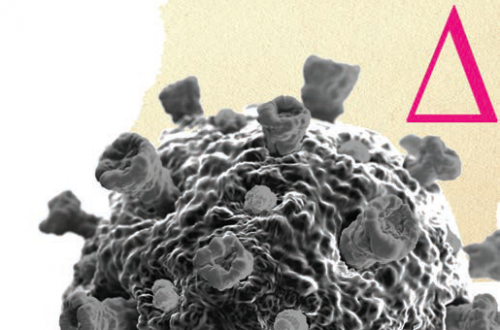
How I learned to stop worrying and love fake meat
The latest example of this occurred last week when Florida Governor Ron DeSantis signed a law banning the production, sale and transportation of cultured meat in the Sunshine State.
In a statement, DeSantis angrily said: “Florida is fighting back against the global elite’s plan to force the world to eat meat or bugs grown in petri dishes to fulfill their dictatorial goals.”
Alternative meat and animal products – whether lab-grown or plant-based – offer a more sustainable route to mass-produced protein than raising animals for milk or slaughter. Time and time again, politicians, nutritionists and even the media have found ways to portray these products as controversial, dubious or substandard. No matter how good they taste or how much they can reduce greenhouse gas emissions, there will always be some new obstacle – in this case, an uncomfortable smile on Gov. DeSantis’ face.

Artificial meat is seen as a threat to the livestock industry because animals are only rarely involved in its production. The company cultures cells initially extracted from animals in a nutritious broth and then makes them into chicken nuggets, patties or fish fillets. The U.S. Department of Agriculture has given approval for two companies, Upside Foods and Good Meat, to begin selling farmed chicken products to consumers. Israel recently became the first country to sign on to the beef version.
It’s still hard to say whether artificial meat will become good enough and cheap enough anytime soon to meaningfully reduce our dependence on cows, chickens, pigs, sheep, goats and other animals for protein and dining pleasure. It will certainly take years before we can produce it in a way that is much lower in emissions than today’s standard animal agriculture.
But there are high hopes that it could be a cleaner, less cruel way to produce meat because it doesn’t require all the land, food, and energy needed to raise, feed, slaughter, and process animals today. One study found that even the cattle industry has made substantial progress, and that cultured meat could reduce emissions per kilogram of meat by 92 percent by 2030.
These gains are critical if we hope to mitigate the growing dangers of climate change, as meat, dairy and cheese production are huge contributors to greenhouse gas emissions.
DeSantis and politicians in other states, including Alabama and Tennessee, may follow suit, and they are raising the specter of mandatory bug-eating and behind-the-scenes maneuvering by global elites to turn artificial meat into a cultural issue and nip the industry in the bud.
But, again, it’s always there. I’ve heard arguments on many political sides of the aisle directed at a variety of alternative protein products, which also include plant-based burgers, cheese and milk, and even cricket flour and meal bars. Obviously, these meat and dairy alternatives should not be highly processed, mass-produced or genetically engineered, nor should they be as unhealthy as animal-based alternatives.
In fact, we are developing tests that almost no product can pass, when in fact all we want from alternative proteins is that they be safe, taste good and reduce climate pollution.
According to the Food and Agriculture Organization of the United Nations, livestock production generates more than 7 billion tons of carbon dioxide, accounting for 14.5 percent of total global climate emissions.
Beef, milk and cheese production is by far the biggest problem, accounting for about 65 percent of the industry’s emissions. We burn carbon-intensive forests to provide plenty of pasture for cows; they then spew out huge amounts of methane (one of the most powerful greenhouse gases) in return. For example, based on standard emissions per animal, Florida’s cattle herds alone can produce about 180 million pounds of methane annually.
In an earlier paper, the World Resources Institute noted that beef contributes 3 percent of the calories in the average American diet, but almost half of that food production contributes to climate pollution. (Read that sentence again if you want to take an action to effectively mitigate your climate footprint.)
The additional challenge is that the world’s population is growing and becoming more affluent, which means more people can afford to buy more meat.
There are ways to address some of the emissions from livestock production that don’t use cultured meat or plant-based burgers, including developing supplements to reduce methane burping and encouraging consumers to reduce their meat consumption. Even just switching from beef to chicken can make a huge difference.
Let’s clarify one thing, though. I can’t imagine any politician in my lifetime, either in the U.S. or in much of the world, proposing to ban meat and expecting to survive the next election. So no, dear reader. No one is coming for your rib-eye steak. If anything, there’s any here.




